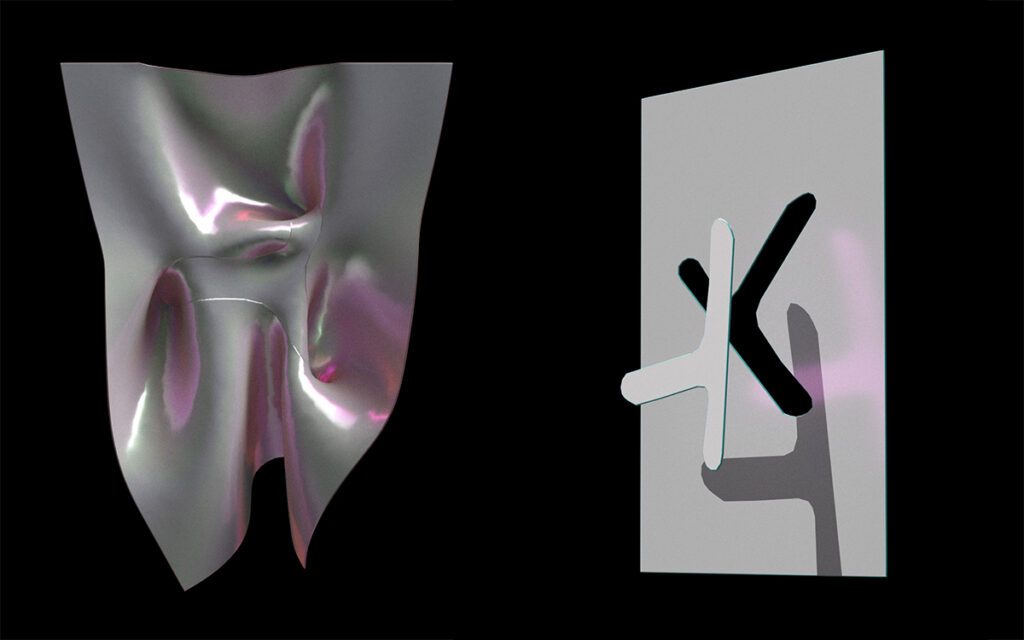Home » Experimental Pattern Cutting Method
ACCIDENTAL CUTTING Experimental Pattern Cutting Method by Eva Iszoro
Accidental Cutting is an experimental pattern cutting method, the intellectual property of Eva Iszoro. It focuses on discovering, rather than deliberately seeking, non-existent volumes through abstract, random, and accidental cuts and flat patterns. This method aligns with the principle of serendipity. It is the phenomenon of finding valuable or interesting things by chance and materializing them in experimental design and render art. It emphasizes seeking out the unexpected over the preconceived. The method can be practiced without software support or as digital pattern cutting and occasionally incorporates sustainable practices such as Zero Waste Pattern Cutting.

Accidental Cutting 3D model and its pattern. Volumes by chance according to the serendipity definition. Possibility of utilization in fashion design and render art.
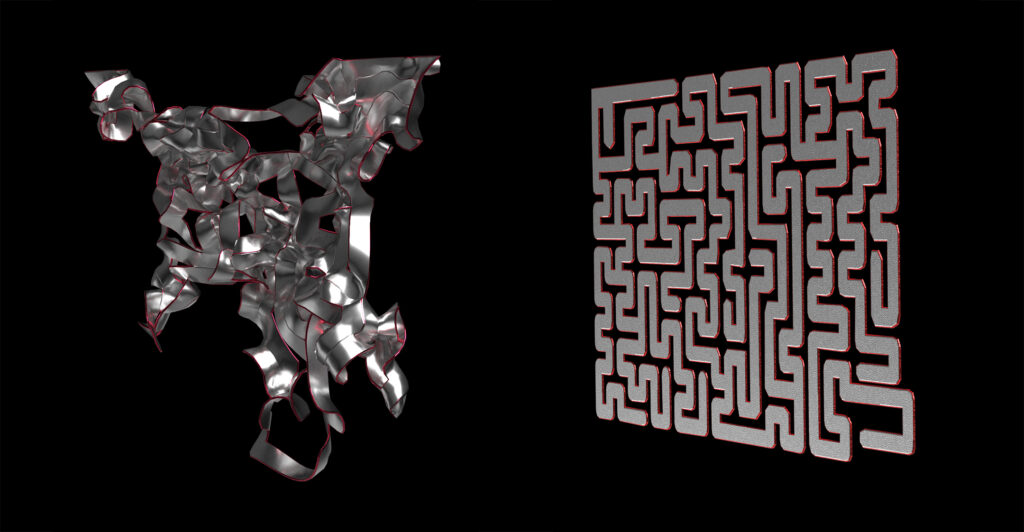
Accidental Cutting 3D model and its pattern. Digital pattern cutting that can be applied to render art.
Experimental Design
The Accidental Cutting, experimental pattern cutting method, stands at the forefront of experimental creative pattern cutting. By introducing chance, randomness, and improvisation into the process of building volumes, it can lead to the creation of unique 3D volumetric forms applicable in fashion, render art, and other fields. Accidental Cutting actively refers to the constructive and projectual method of achieving complex volumetrics.
In this method, the design process begins with the introduction of random, abstract, and accidental cuts along with geometric shapes. These flat patterns can then be combined with themselves or with other elements, thus creating unexpected volumes. Consequently, the Accidental Cutting method leads to surprising and infinite results from basic units of randomly generated patterns. Initially, these patterns do not have any recognizable volume associated with them. However, any flat shape has the potential to generate an interesting volume.
Throughout the entire process, development occurs without any preliminary sketches of the design project’s outcome. The final result, therefore, remains unknown and emerges through a completely experimental process, highlighting the innovative essence of the method.
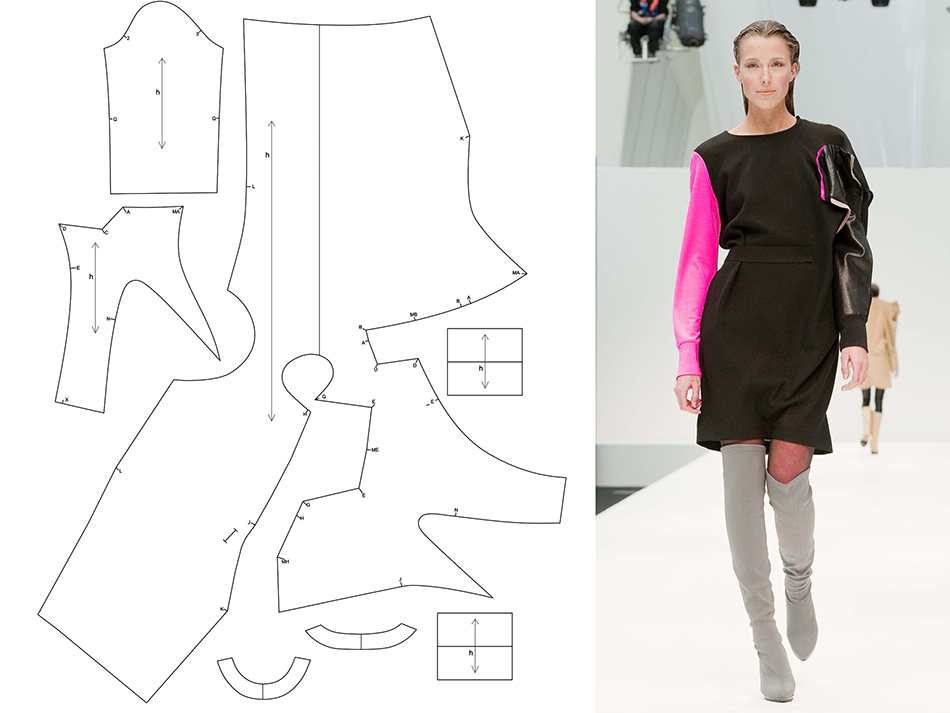
Accidental Cutting pattern and corresponding dress.
Making instead of thinking
Accidental Cutting isn’t just a pattern cutting method for obtaining patterns; it’s about creating volumes using abstract patterns. So, the technical process of pattern cutting transforms into creative or artistic endeavors. In this experimental design method, the initial focus isn’t on the mind, but more on making than thinking. It requires combining the roles of designer or artist and pattern maker into one.
Thus, the two-dimensional beauty of the patterns isn’t a priority. Instead of focusing on pretty or ugly patterns, large or small, or oddly shaped ones, it emphasizes volumes that are either interesting or not. In Accidental Cutting, the most unusual form can turn into a volume with potential constructive and aesthetic interest. The method involves mixing several techniques within a process that follows very particular defined steps.
Serendipity, unexpected results
Serendipity, defined as the act of finding interesting or valuable things by chance. It perfectly aligns with the Accidental Cutting method. This approach is experimental design at its core, as the results emerge during the creative process and are entirely unpredictable. The method focuses on discovering volumes that did not previously exist, aiming to produce completely original and unique volumetrics. Those garments or art pieces did not exist before in the history of fashion or art and can extend to other design or artistic forms that use flat patterns for creating volumes or sculptures.
This experimental pattern cutting method enables the creation of unknown formal results, concentrating on discovering, rather than searching for, the nonexistent. It incorporates serendipity and the generation of volumetric material that couldn’t have been created otherwise. In essence, the method acts as the project’s generator and determinant, leading to surprising outcomes. The serendipity aspect is one of the major benefits of Accidental Cutting, as it fosters the generation of unpredictable results. Through this method, the unknown is explored and unveiled.
Open processes, infinite results
The work methodology, in this experimental design approach, is characterized by open processes that continuously branch out. Each solution leads to different ones, which in turn give rise to others, creating a perpetually evolving research methodology. This approach consistently opens new doors for practitioners, encouraging limitless exploration due to its intrinsic characteristics. Moreover, the potential for expansion and multiplication is enhanced by the diverse application possibilities of the experiments generated. It is feasible to introduce variants in scale, quantification, localization, and distribution, as well as variations in textile supports, whether physical or virtual.
A key characteristic of this method is its capacity for continuous multiplication of results, a feature not found in other methods explored during the PhD research period.
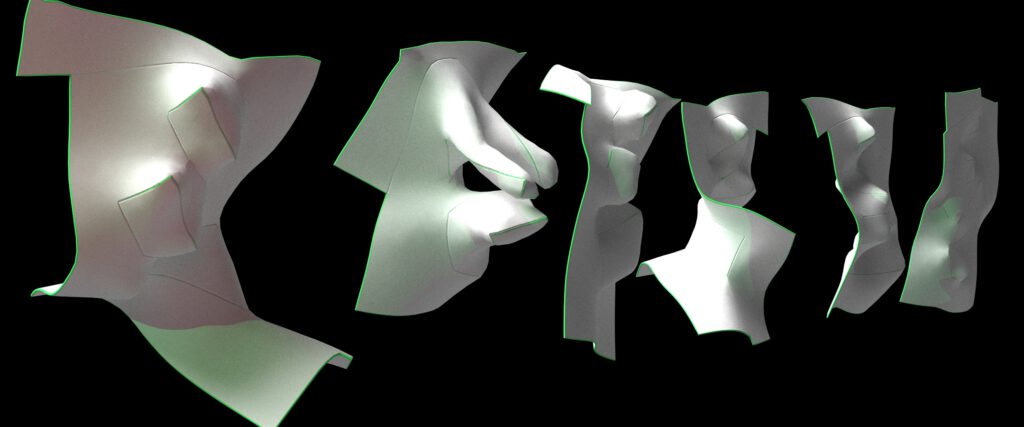
Diverse textile models, of digital pattern cutting, made with the same flat pattern appling Accidental Cuuting method. Possibility of find interesting volumes by chance, according to Serendipity definition.
New terminology in pattern cutting
Conversely, Accidental Cutting introduces a series of concepts into the language of pattern cutting. These include the volumetric identification of a pattern, decontextualization and formal abstraction of the pattern, and the geometric versatility of the pattern in generating different volumes. Additionally, it involves dividing patterns into positive, negative, complementary, relative, subordinate, and hierarchical categories, along with suppression and involuntary addition, and the apparent deformation of a pattern, among others.
Research recognition, Extraordinary Prize for PhD Thesis
Eva Iszoro’s Ph.D. thesis, which describes the method, was presented at the Architecture School of the Polytechnic University of Madrid in February 2016. This thesis achieved the highest qualification of Outstanding CUM LAUDE and also received the Extraordinary Doctoral Thesis Award from the Polytechnic University of Madrid. For frther details, here´s the link to Eva Iszoro´s PhD thesis.
You can find more about Eva Iszoro´s research here.
Sustainable Approaches
Sustainability isn’t the primary goal of Accidental Cutting, as the focus lies in discovering non-existent volumes. However, the method does, at times, include various sustainable approaches like Zero Waste Pattern Cutting. These approaches prioritize efficiency in resource use and effort minimization to achieve optimal results, both from the designer’s and the user’s perspectives. Inherently, the Accidental Cutting method encompasses several sustainable approaches, which are described as follows:
1_Use and repetition of the same experimental volumetric detail in a fashion collection or artistic series. Those elements can be applied to different parts of the body, at various scales, and considering diverse quantities and distributions, both symmetrical and asymmetrical. A single experimental volume can be applied to conventional clothes, making them unique.
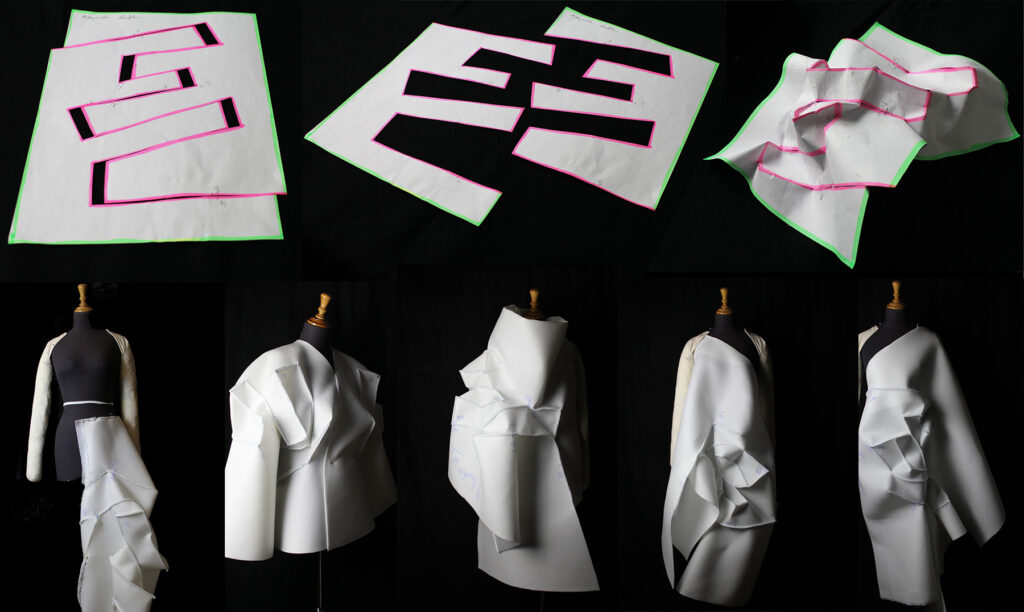
Exploration of one experimental volume in different garments. Application of Accidental Cutting Method.
2_Exploitation of the geometric versatility of flat patterns, understood as the ability to join a pattern with itself or with others. It can be done in various ways by altering the distribution of joining marks on the pattern edge. It is possible to create highly differentiated volumetric solutions using only one or a very small number of patterns. These patterns can be abstract or conventional, as in the example below. In this case patterns from a conventional garment, such as a basic dress, were joined in different ways. The results are completely original volumes.
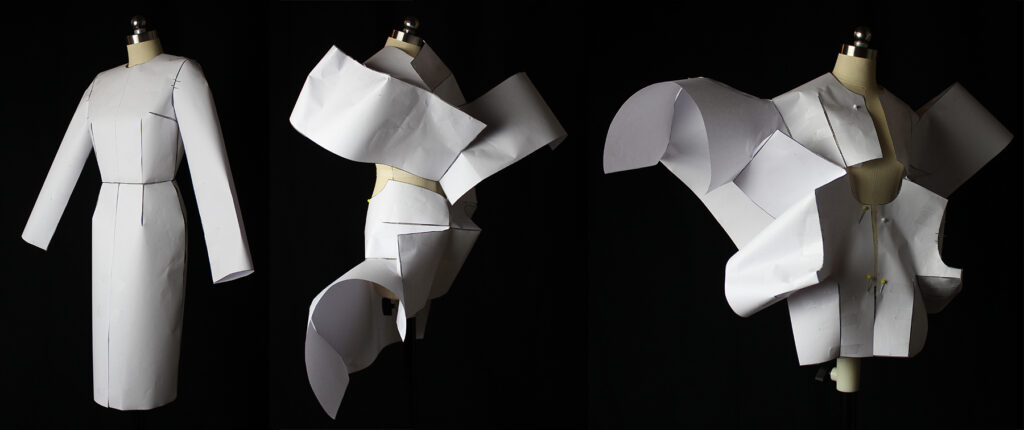
Exploration of the geometric versatility of patterns and the creation of different garments using the same flat patterns from a standard anatomical dress. Application of the Accidental Cutting method.
3– ZWPC– Zero Waste Pattern Cutting, Zero Waste design philosophy. It’s possible to practice Accidental Cutting without wasting fabric, using Zero Waste Pattern Making concepts.
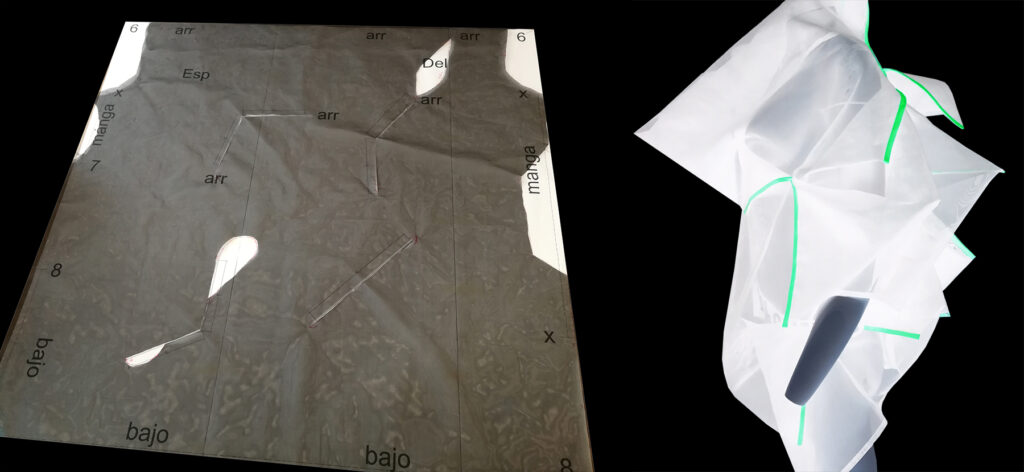
Zero Waste Philosofy, pattern & garment.
4-Eva Iszoro explores the virtual construction, applied into 3D render art and fashion since the COVID-19 pandemic. It’s possible to develop an entire fashion collection or artistic series without sewing a single piece. Sustainability in the virtual world is understood differently since the processes and consumption of matter are different than in the physical world using software computer tools of digital pattern cutting.
